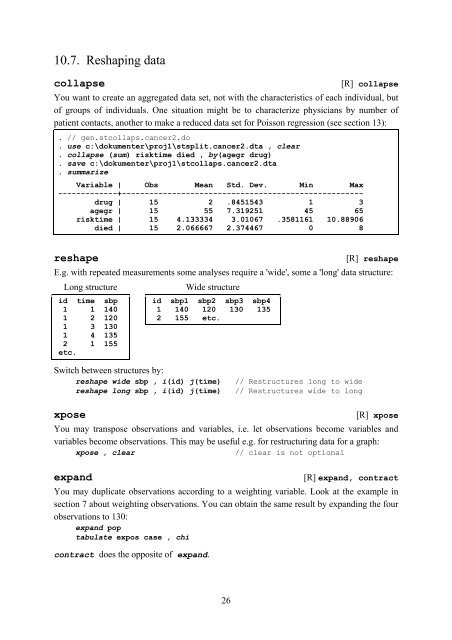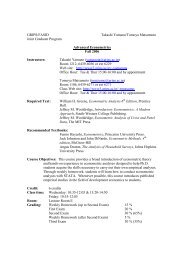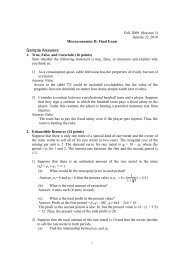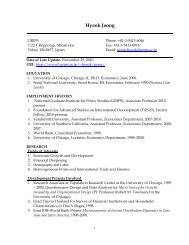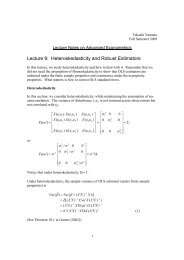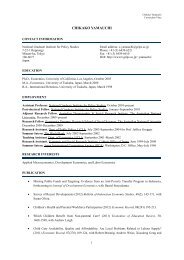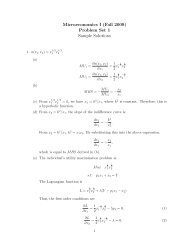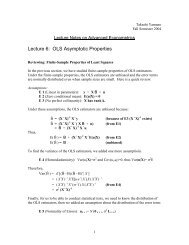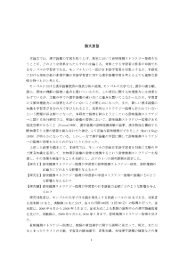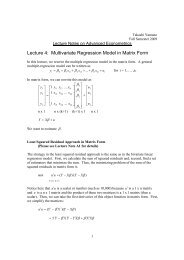Introduction to Stata 8 - (GRIPS
Introduction to Stata 8 - (GRIPS
Introduction to Stata 8 - (GRIPS
You also want an ePaper? Increase the reach of your titles
YUMPU automatically turns print PDFs into web optimized ePapers that Google loves.
10.7. Reshaping data<br />
collapse [R] collapse<br />
You want <strong>to</strong> create an aggregated data set, not with the characteristics of each individual, but<br />
of groups of individuals. One situation might be <strong>to</strong> characterize physicians by number of<br />
patient contacts, another <strong>to</strong> make a reduced data set for Poisson regression (see section 13):<br />
. // gen.stcollaps.cancer2.do<br />
. use c:\dokumenter\proj1\stsplit.cancer2.dta , clear<br />
. collapse (sum) risktime died , by(agegr drug)<br />
. save c:\dokumenter\proj1\stcollaps.cancer2.dta<br />
. summarize<br />
Variable | Obs Mean Std. Dev. Min Max<br />
-------------+-----------------------------------------------------<br />
drug | 15 2 .8451543 1 3<br />
agegr | 15 55 7.319251 45 65<br />
risktime | 15 4.133334 3.01067 .3581161 10.88906<br />
died | 15 2.066667 2.374467 0 8<br />
reshape [R] reshape<br />
E.g. with repeated measurements some analyses require a 'wide', some a 'long' data structure:<br />
Long structure Wide structure<br />
id time sbp<br />
1 1 140<br />
1 2 120<br />
1 3 130<br />
1 4 135<br />
2 1 155<br />
etc.<br />
id sbp1 sbp2 sbp3 sbp4<br />
1 140 120 130 135<br />
2 155 etc.<br />
Switch between structures by:<br />
reshape wide sbp , i(id) j(time) // Restructures long <strong>to</strong> wide<br />
reshape long sbp , i(id) j(time) // Restructures wide <strong>to</strong> long<br />
xpose [R] xpose<br />
You may transpose observations and variables, i.e. let observations become variables and<br />
variables become observations. This may be useful e.g. for restructuring data for a graph:<br />
xpose , clear // clear is not optional<br />
expand [R] expand, contract<br />
You may duplicate observations according <strong>to</strong> a weighting variable. Look at the example in<br />
section 7 about weighting observations. You can obtain the same result by expanding the four<br />
observations <strong>to</strong> 130:<br />
expand pop<br />
tabulate expos case , chi<br />
contract does the opposite of expand.<br />
26


